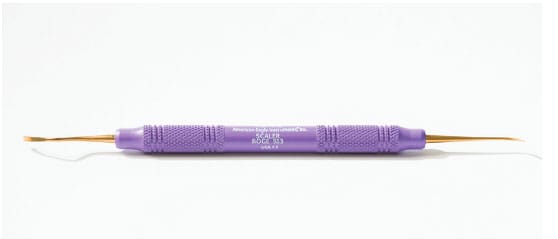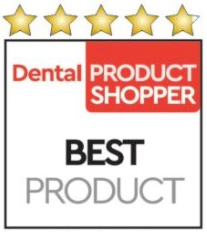 Designed with XP Technology, Boge 513 no-sharpen scalers provide superior cutting efficiency and access to the oral cavity.
Designed with XP Technology, Boge 513 no-sharpen scalers provide superior cutting efficiency and access to the oral cavity.
Hygienist Julie Carr was searching for a scaler that easily removed calculus where lingual retainers are in place and around orthodontic brackets. After testing American Eagle Instruments’ Boge 513 XP Technology scaler for 4 weeks in her practice, Carr proclaimed, “This scaler is wonderful.”
Carr explained how well the scaler performed on a patient who had a lot of calculus around her lingual retainer. “I tried removal with a [competitor’s] scaler first and noticed that the patient cringed with the pressure that was needed and the sound it made when the calculus chipped off,” Carr shared. “I then switched to the Boge 513 scaler, and the hoe side of this scaler shaved the calculus off easily. The patient did not cringe at all; not very much pressure was needed, and the calculus didn’t chip off. It came off in layers instead. It was much gentler to the patient. I also really like the [Nebraska 128] end of the scaler. It fits well in crowded areas and interproximal spaces. Overall, this is a great instrument and I would definitely recommend it!”
With its sharpen-free XP Technology, American Eagle Instruments’ Boge 513 modified anterior sickle/hoe scaler maximizes efficiency, access, and comfort.
Calculus Removal and Blade Sharpness
Designed by Emily Boge, CDA, RDH, MPA, the Boge 513’s razor-sharp edge stays sharp longer than any other stainless or carbon steel instrument, according to American Eagle Instruments. The reliable sharpness maximizes cutting efficiency, and with no need to sharpen, the instrument improves productivity.
“I can get the difficult stains off because of the super sharp edge of this instrument,” shared Sherry Morrissey, RDH, who said the blade remained sharp after using it on 6 patients with heavy calculus around their ortho bars. “I’m more confident in removing everything on the tooth surface: calculus, stain, and plaque,” she added.
“Ease of use and the sharpness allowed removal of calculus without over-exertion or lateral pressure,” noted hygienist Kristi Evansen. She continued, “The sickle end was slim, sleek and easily applied to narrow areas, and the hoe end was able to shave the calculus away effortlessly.” When asked about improvements, Margaret Conrad, RDH, recommended a longer terminal end of the sickle. Michelle Henry, RDH, mentioned, “The blade was very sharp and stayed sharp.”
Access and Adaptation
Thinner than stainless or carbon steel blades, XP instruments simplify access to periodontal pockets and interproximal areas. The Boge 513’s hoe end is designed for marginal recession and posterior areas with exposed root surfaces, areas with fixed orthodontic wires, and upper and lower anterior regions. The Nebraska 128 sickle end is designed for interproximal contact areas and those with crowding and/or recession.
After using the scaler on a patient with severe clefting on the lingual and facial mandibular anteriors, hygienist Scotti Biscossi reported, “Access and removal were much easier and safer as the tip was wider and gave me better stability.” Henry said the scaler “saved chair time in hard-to-reach areas,” and Evansen described the Boge as “very helpful when cleaning around narrow, crowded areas on the lower anterior.” Rita Anderson, RDH, suggested, “[I’d like them to] make the hoe a little smaller.”
Several evaluators commented on access around permanent appliances, including Amy Sherman, RDH, who said, “It made difficult tartar under a child’s lingual bar easier to get off,” and Nicole Kulas, RDH, who said it worked great when used for calculus in the lower lingual around permanent retainers. Calling it “lightweight and easily adaptable to tight contacts,” Cheri Lindstrom said, “The hoe end removed the stain easily and removed calculus under the wire of the mandibular bonded retainer.”
Clinician and Patient Comfort
The Boge 513 reduces clinician fatigue by providing superior tactile sensitivity and requiring a much lighter grasp and only slight pressure to plane away calculus and tartar. Patient comfort is also enhanced by the lighter pressure and easier access.
“[It] reduces chair time, makes me a happier hygienist, and gets the job done quickly without added pressure on my wrist and hands,” said Morrissey, adding, “[I would] definitely recommend it to anyone having wrist or hand issues from heavy scaling.”
Overall Satisfaction
All of the evaluators said they would recommend the Boge 513. Lindstrom remarked, “We’d love to get these in our everyday set-up.” Evansen said, “The Boge 513 is a real time saver because of the effectiveness and quality of the instrument.”







